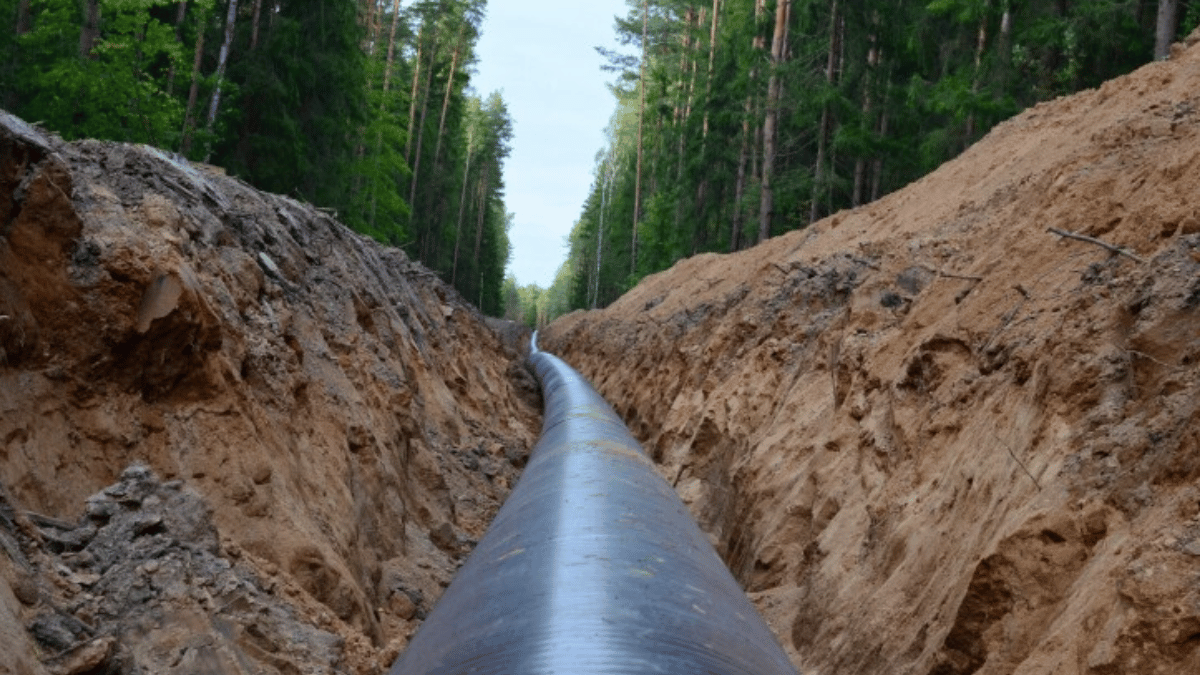Congress tried to have the last word on the Mountain Valley Pipeline, requiring all federal permits to be issued for the 300-mile natural gas pipeline in a deal lawmakers approved last month.
However, the Fourth U.S. Circuit Court of Appeals stepped in to block new construction on the project. Ultimately, the pipeline may get built. The pipeline’s builders have asked the U.S. Supreme Court to intervene, and a decision may come before the end of this month.
But some energy analysts question whether the pipeline is even needed. Curtis Tate spoke with Suzanne Mattei of the Institute for Energy Economics and Financial Analysis for her perspective.
This interview was edited for clarity and length.
Tate: Who is pushing for this pipeline? Where is the gas ultimately going?
Mattei: We’ve said from the start, that this was not a good idea. This was a very expensive pipeline, going through very sensitive terrain. And that there was not a compelling need. There was not a big line of people saying we need this gas, bring this gas to us; the pipeline was driven by gas producers. So you know, when you think about energy need, there’s two ends of it. Someone has energy resources, they feel a need to extract those and sell them someplace to make money. But do the customers need it? Are they begging for it? This pipeline was not driven by utility need, it was driven by supplier need. That was our view, when we first analyzed the pipeline project back in 2016. And we haven’t really seen anything to change our view of that at this point.
Tate: What should have happened? Could any particular agency have given the project a more thorough examination?
Mattei: This project should have been much more thoroughly examined from the get go at the Federal Energy Regulatory Commission, which is supposed to actually evaluate need and alternatives. They’re the ones that are supposed to really do that right from the start. And they never did. So there was a whole lot of debate that just never happened. I saw the same problem with the Williams pipeline that was supposed to run from Pennsylvania to New York. And the good thing there was that the state public service commission did its own evaluation of alternatives in connection with deciding whether they were going to allow ratepayers to have to pay for the capital expenses of the pipeline, and that’s how it was stopped.
Tate: What’s changed in public perception since construction began on this pipeline?
Mattei: I think one thing that’s changing nationwide is that landowners are becoming a lot less tolerant of pipelines coming through their property. And that is changing the dynamic a lot. That was one of the things that started affecting the progress that was starting to be made on an extension to the Mountain Valley Pipeline. It was landowners that were really kicking up a fuss on that. So I think people are less tolerant, I think they know that there are other alternatives and ways to deal with things.
We know that there are ways to reduce energy demand, demand management, which can actually be surprisingly effective. So that people change the times of day that they do certain things, industries run certain operations at certain times of day, so that you reduce the peak load, because most of the time, when these things are being built, they’re not being built for the general day-to-day, they’re really being built for peaks. And there are other ways to shave a peak, than building a big, huge, gigantic infrastructure that you’re going to have to live with for 40 years whether you need it or not.
Tate: If there isn’t going to be demand for this gas domestically, what about overseas?
Mattei: We’re seeing this with liquefied natural gas. Also, our organization recently took a good look at what was happening with export because there was a huge rush to build liquefied natural gas terminals. We’re gonna supply Europe with a lot of natural gas. And it was just a huge rush to do that. And nobody planned it. How much is Europe really going to need? Do they even have the infrastructure to accept and manage that? None of that happened.
So what we projected ultimately was, first of all, Europe doesn’t really want to be so heavily dependent on energy imports, and they’re getting a lot smarter about energy efficiency, and wind and solar, and even geothermal. And so the demand isn’t going to be exactly what people expected. And number two, there’s already been so many terminals built and so many contracts and things going on that there’s going to be a glut. We’re looking at a really significant glut that will probably be surfacing between 2025 and 2027.
When all these things that are being built right now, they all come online, and then they all start pumping gas into the system, they’re gonna have financial problems. They’re gonna have a hard time selling the gas at prices that allow them to make a profit. We have a real problem in this country in terms of energy planning. It’s just not happening the way it should.
